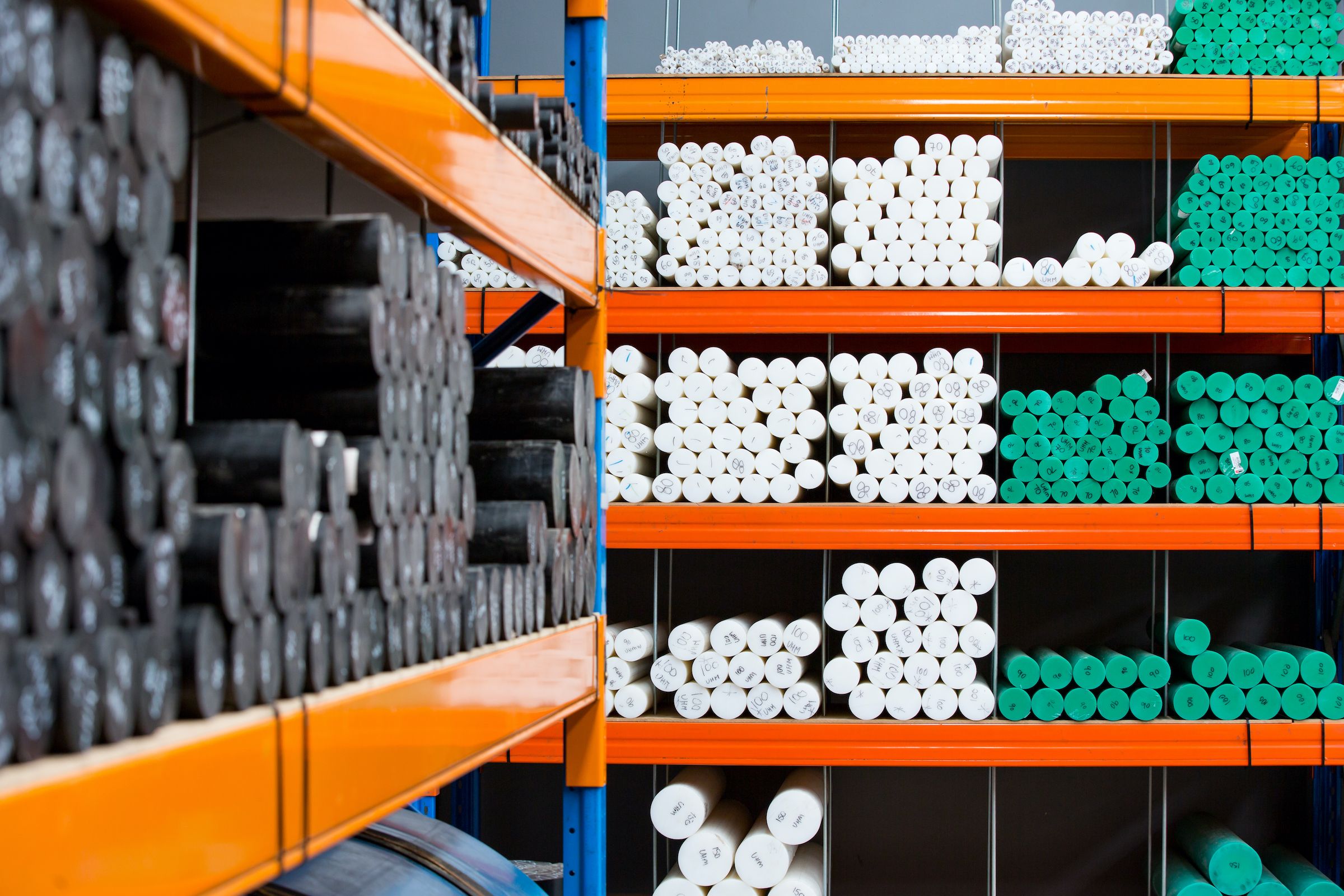At a glance
- Not all engineering plastics are recyclable; their chemical structure, purity, and local infrastructure determine their recyclability.
- Thermoplastics such as HDPE, PP, and PET are widely recyclable.
- Speciality plastics, such as nylon, PC, POM, and PEEK, pose recycling challenges and are not widely recycled.
- Choosing recyclable plastics helps businesses align with environmental protection goals while also saving costs.
These days, manufacturing businesses are focusing on sustainability and circular design. As a result, the recyclability of engineering plastics has become a critical factor in material selection and lifecycle planning.
In sectors such as manufacturing, agriculture, and transportation, engineering plastics are essential for performance and durability. But it’s important to note that not all plastics are the same in terms of recycling.
Engineering plastics exhibit widely variable recyclability due to differences in chemical structure and contamination risks. So, it’s essential to understand the type of recyclable polymers and the conditions required for recycling, if you are considering sustainability and environmental friendliness.
In this guide, we will uncover the most common recyclable engineering plastics and those that are difficult to process for reuse.
Before we dive in, let’s understand the determining factors for recycling engineering plastics.
What Makes a Plastic Recyclable?
The recyclability of a plastic varies depending on its specific chemical properties. This difference in composition imposes the use of different processes and systems for recycling.
Commonly used plastics are easily reprocessed, while plastics made for specific needs require advanced sorting, chemical treatment, or specialised facilities.
Below are the main factors influencing the recyclability of engineering plastics:
- Thermoplastic vs. Thermoset Structure: Thermoplastics can be recycled multiple times as they can be melted and reshaped as needed. However, engineering plastics with a thermoset structure have an irreversible form. This means that thermoset cannot be reprocessed or recycled once it has been melted.
- Purity and Absence of Contamination: Clean and single-grade plastic is easier to process and recycle. However, when plastic is mixed with other materials, additives, and fibres, the plastic becomes unsuitable for recycling.
- Thermal and Chemical Stability: Some plastics degrade when reheated or react with atmospheric elements. As a result, the quality of the recycled output is reduced.
- Local Processing and Recycling Capabilities: Even technically recyclable plastics may not be accepted without the right regional facilities and infrastructures. Access to processors with the correct sorting, shredding, or regranulating equipment is necessary.
Now, let’s move on to the list of some common recyclable engineering plastics.
Common Recyclable Engineering Plastics
Most commonly used engineering plastics that are also great for recycling include:
PET (Polyethene Terephthalate)
PET is one of the most recycled engineering plastics worldwide. Best known for its use in consumer products like bottles, PET also serves as a lightweight structural polymer in films, trays, and packaging. It has strong mechanical properties and excellent barrier performance.
PET is valued in industrial and commercial applications for its clarity, strength, and ability to form thin but strong components, especially in packaging and textile applications.
The recyclability of PET plastics is well established, supported by global demand and efficient collection and processing systems.
HDPE (High-Density Polyethene)
HDPE is a lightweight and durable plastic and is resistant to moisture, chemicals, and impact. These properties make it highly suitable for making heavy-duty industrial products like industrial-grade sheets, chemical storage tanks, crates, and liners.
It is among the most recyclable engineering plastics due to its simple molecular structure and ability to withstand multiple melt cycles with minimal degradation.
HDPE waste can be efficiently shredded, washed, and pelletised for reuse in non-critical applications such as piping, plastic pallets, or secondary containers.
PP (Polypropylene)
Polypropylene is a strong and flexible thermoplastic used in piping systems, automotive panels, packaging films, and other applications that endure repeated stress or mechanical hinges.
However, PP has a narrower processing window, and its properties may degrade more noticeably during re-melting, especially if overheated. Recycled PP is frequently downcycled into lower-spec applications unless closed-loop systems are in place to maintain quality and traceability.
Engineering Plastics That Are Rarely Recycled
Many high-performance or specialty engineering plastics present challenges to recyclability. Factors like complex chemical structures, high melting points, or degradation behaviour during reprocessing make these plastics difficult to reprocess.
While some can be reused or chemically recycled in controlled systems, they are often excluded from standard recycling streams.
Let’s see some of the rarely recycled plastics:
Nylon (Polyamide)
Nylon is known for its toughness, low friction, and resistance to abrasion, which make it ideal for high-load moving parts. For example, mechanical parts, bearings, cable ties, and other components that require wear resistance use Nylon.
Although nylon is technically recyclable in controlled and single-source industrial waste systems, it is not widely recycled.
Nylon comes with a variety of grades and additives, which makes the recycling process very complex and expensive. Furthermore, it also absorbs moisture and is sensitive to temperature, adding challenges in recycling the material.
Polycarbonate
Polycarbonate plastic has exceptional impact resistance and optical clarity, making it an ideal material for lightweight covers, electronic housings, safety glazing, and machine guards. Its toughness and transparency allow replacing glass in many risky and break-prone environments.
Its recyclability is technically possible but restricted by sensitivity to heat and contamination. It has a high melting point, but it is thermally sensitive. Moreover, polycarbonate is often used in critical applications, such as those in safety, medical, or structural fields. So, recycled products made from polycarbonate are typically not used.
POM (Acetal)
Acetal plastic is a precision engineering polymer renowned for its excellent dimensional stability, low friction, and high machinability. It excels in high-precision applications where tight tolerances and low wear are critical, such as gears, fasteners, and valve components.
However, its narrow thermal processing range and tendency to degrade make recycling impractical without specialist handling. It has a melting point of around 175°C and, if not stabilised, starts to degrade above this temperature. Moreover, it has a low volume and specialised use, which means collection and recycling can be costly and not worth the effort.
PEEK, PTFE, and Other High-Performance Polymers
High-performance polymers such as PEEK (Polyetheretherketone), PTFE (Polytetrafluoroethylene), PSU (Polysulfone) and PPS (Polyphenylene Sulphide) are engineered to be strong and resistant to chemicals and heat.
They are used in applications like aerospace, medical devices, oil and gas, and high-temperature industrial environments. They can replace metals in some high-performance settings. As a result, these plastics are either reused or, more often, disposed of after their initial application, unless specialist mechanical or chemical recycling systems are available.
In conclusion, understanding the recyclable properties of engineering plastics helps make sustainable material choices. Furthermore, considering recyclability is essential for meeting compliance targets, operating cost-effectively, and supporting environmental goals.
While PET, HDPE, and PP are widely recyclable, high-performance polymers like Nylon, PC, and PEEK are challenging for recycling due to their complex properties and processing requirements.
That said, it is essential to recognise that not every application permits the use of fully recyclable materials. Regardless of your industry and business, informed material choices in the product design and procurement process can reduce future waste.
If you are seeking an engineering plastic that is both sustainable and meets your specific needs, consider consulting a reputable engineering plastic supplier like ePOL. Get in touch with our technical team for practical advice tailored to your next build or procurement cycle.








